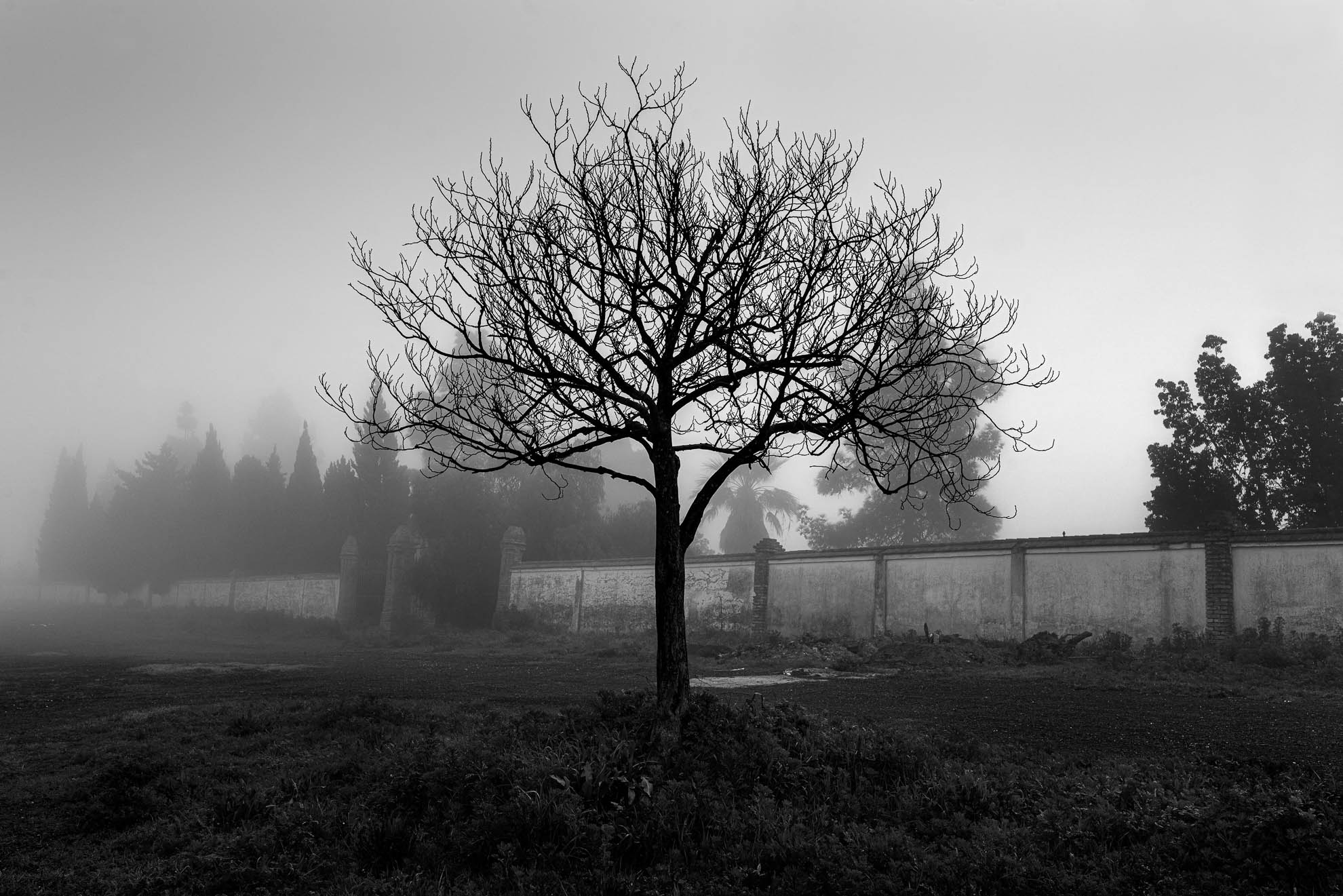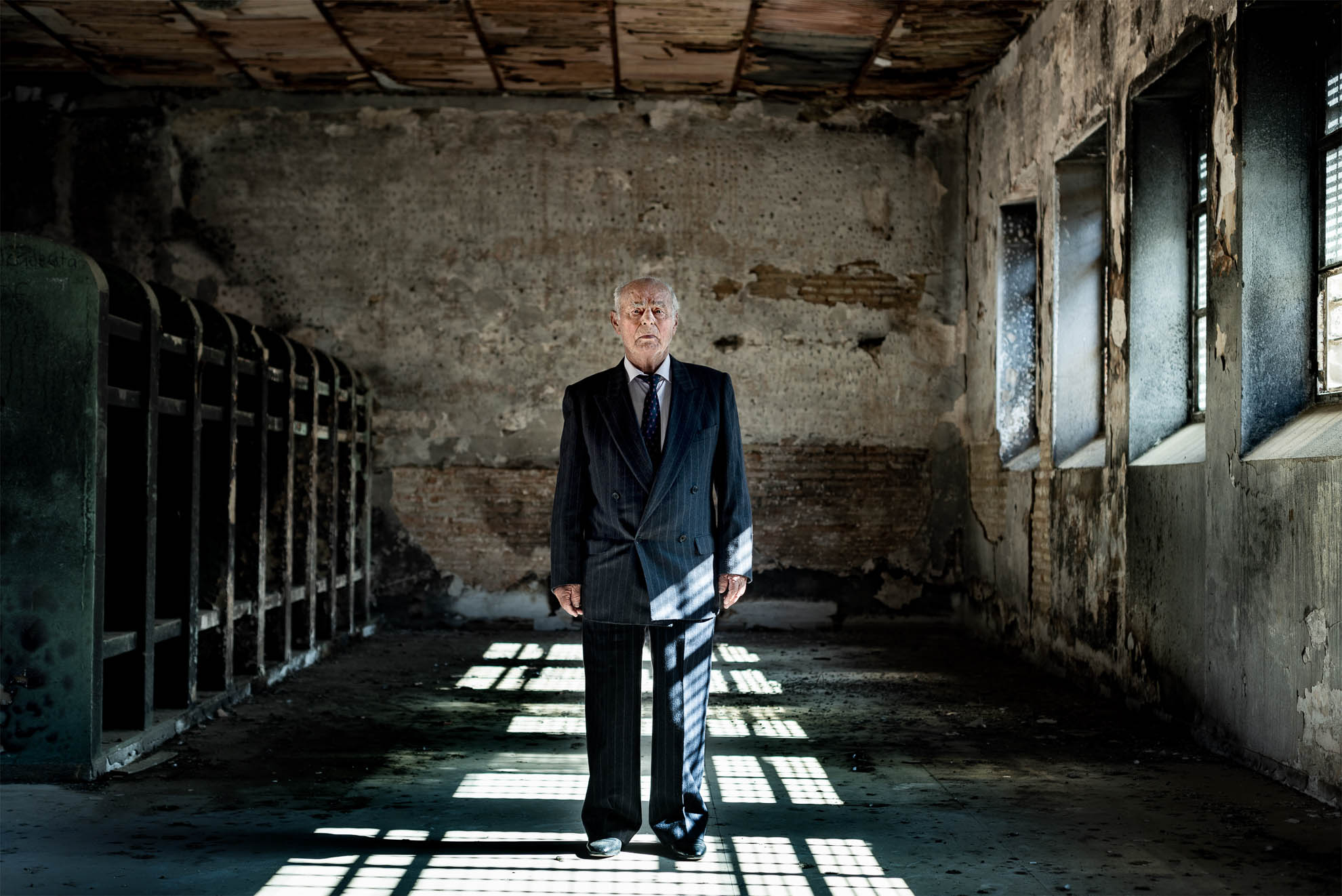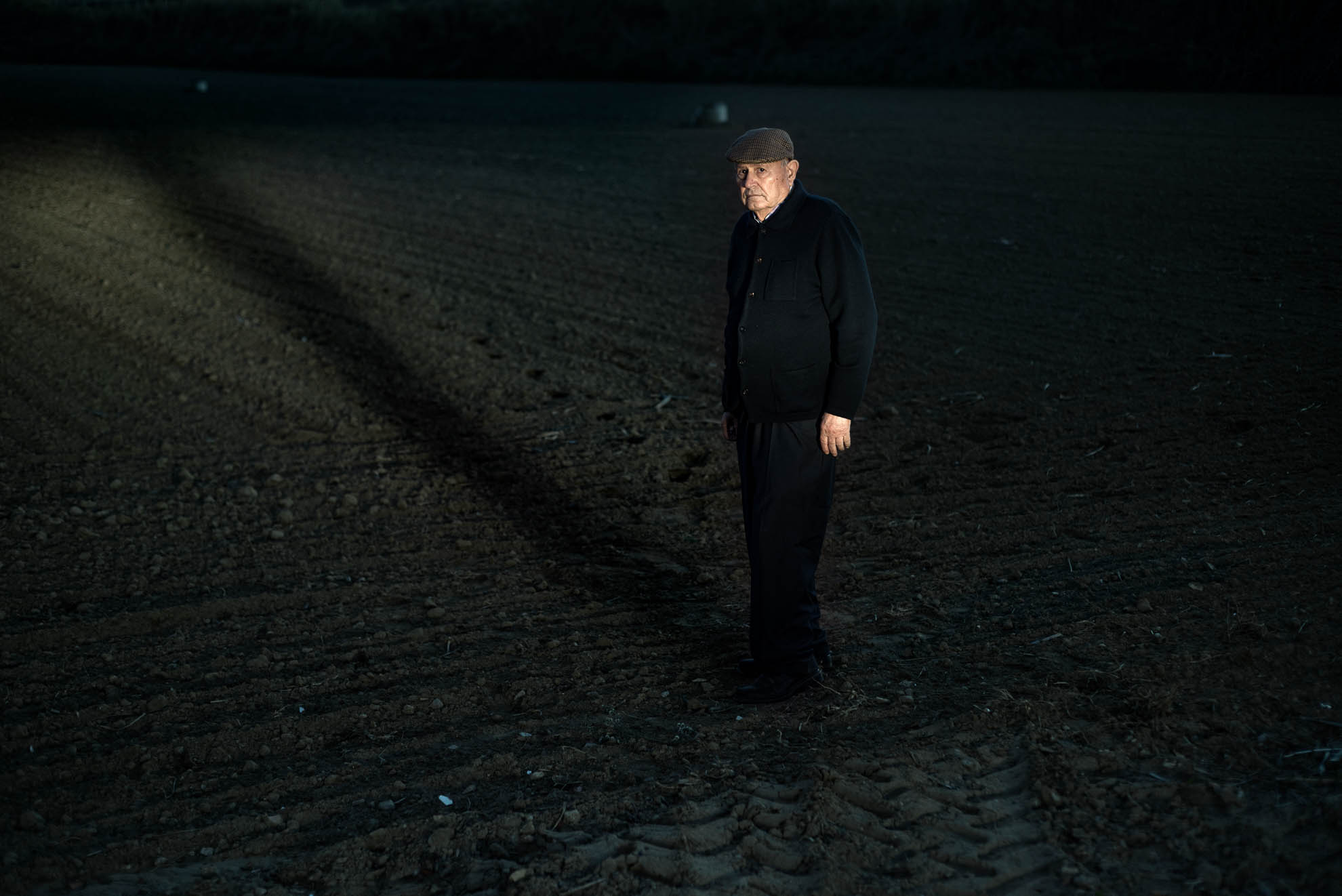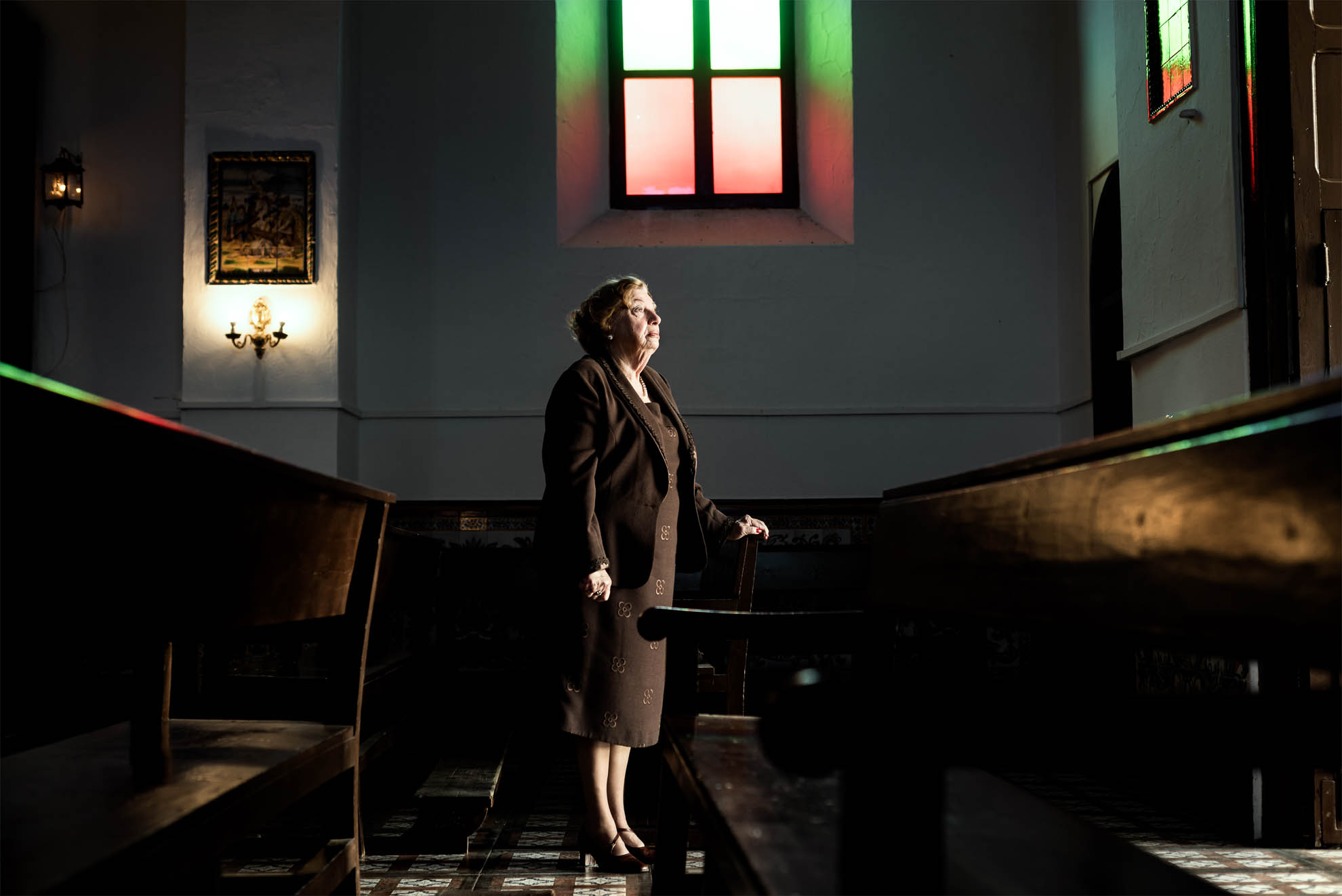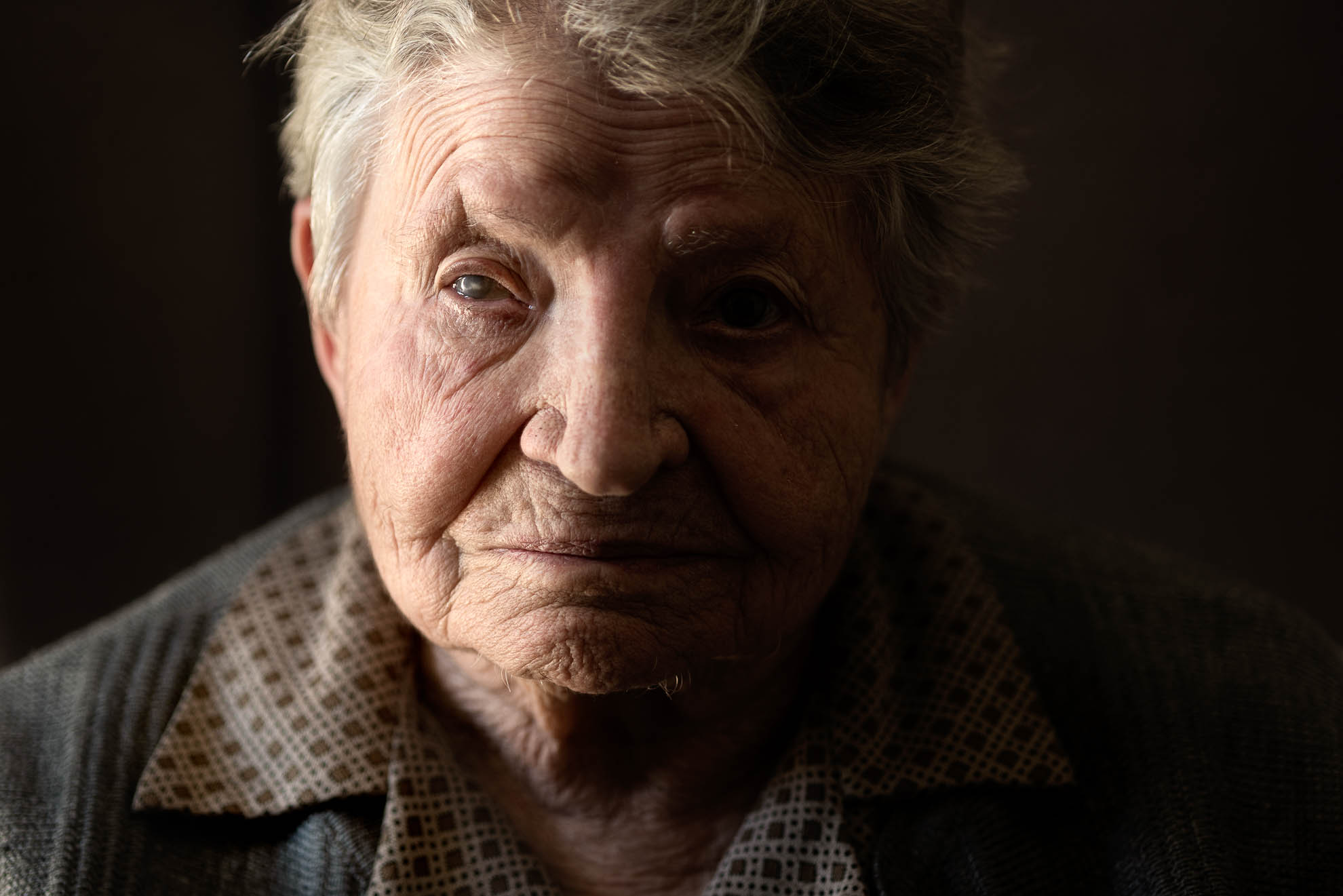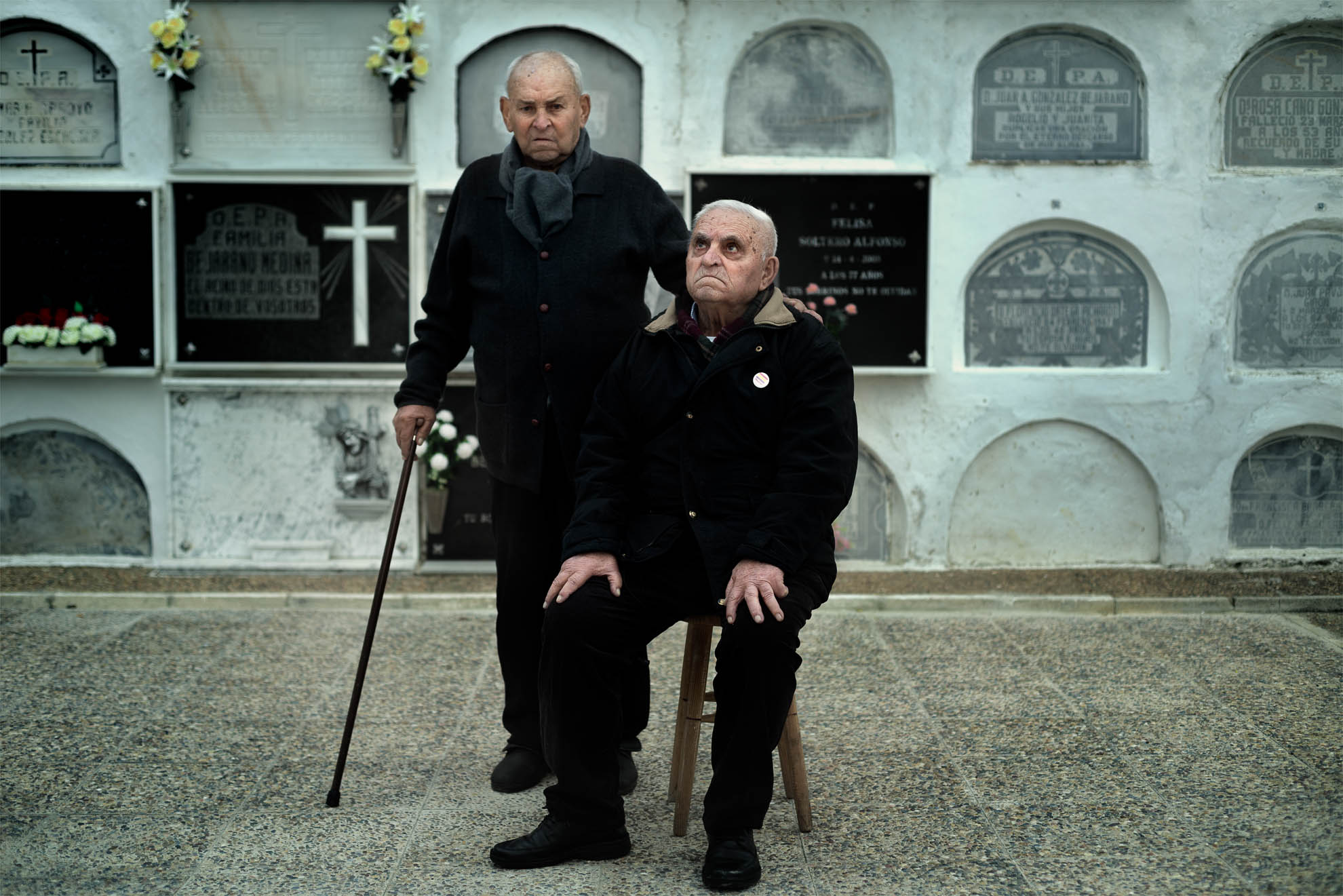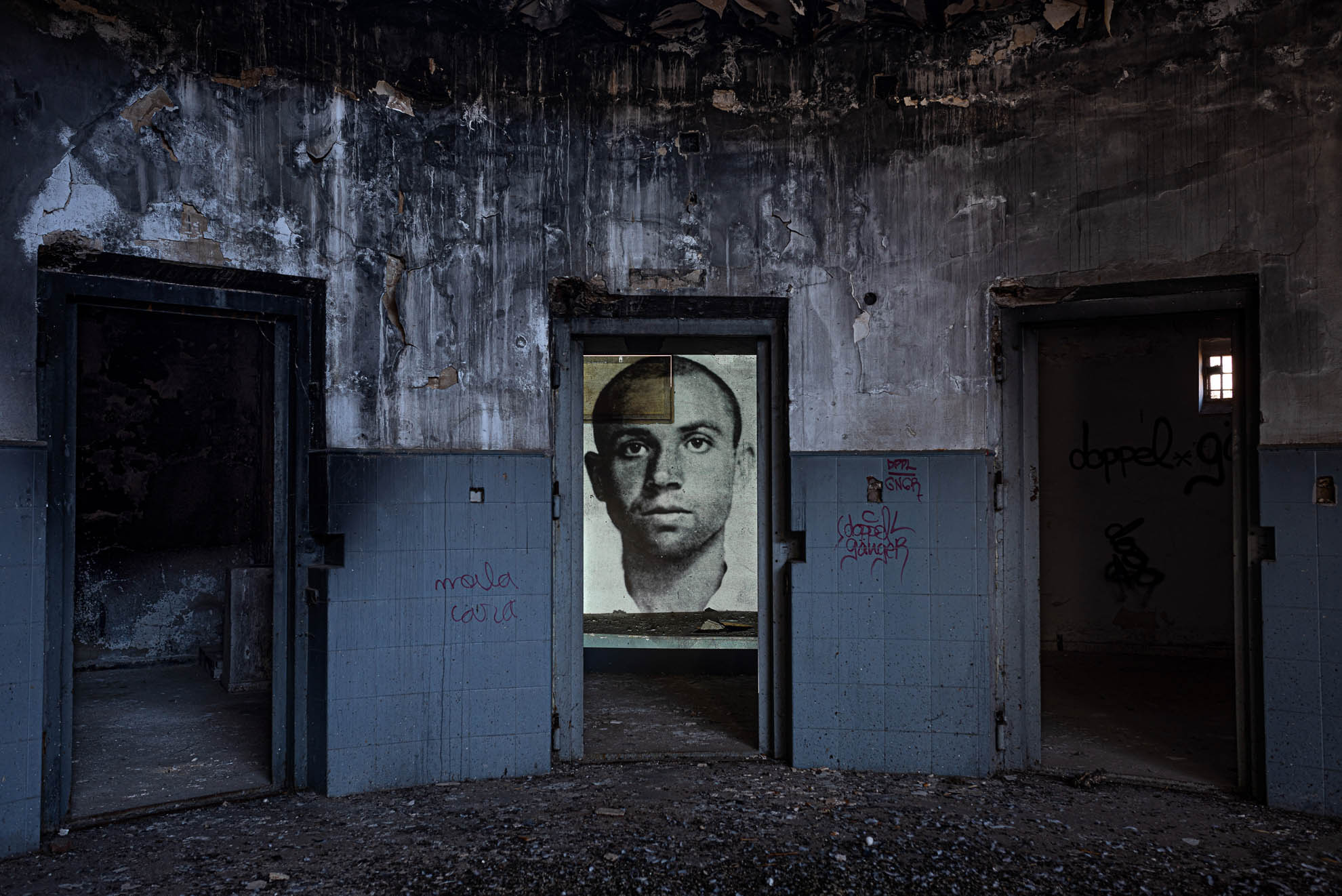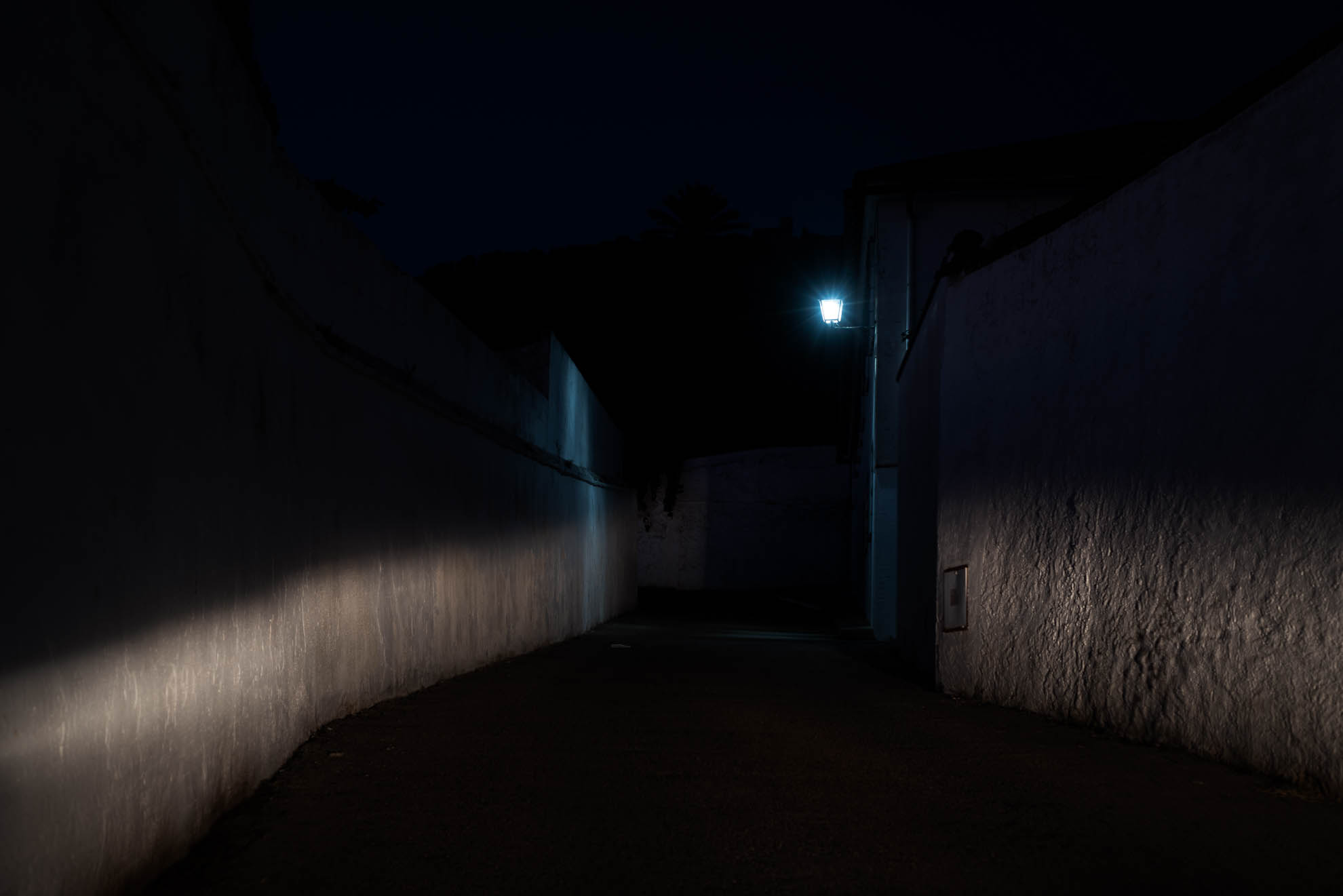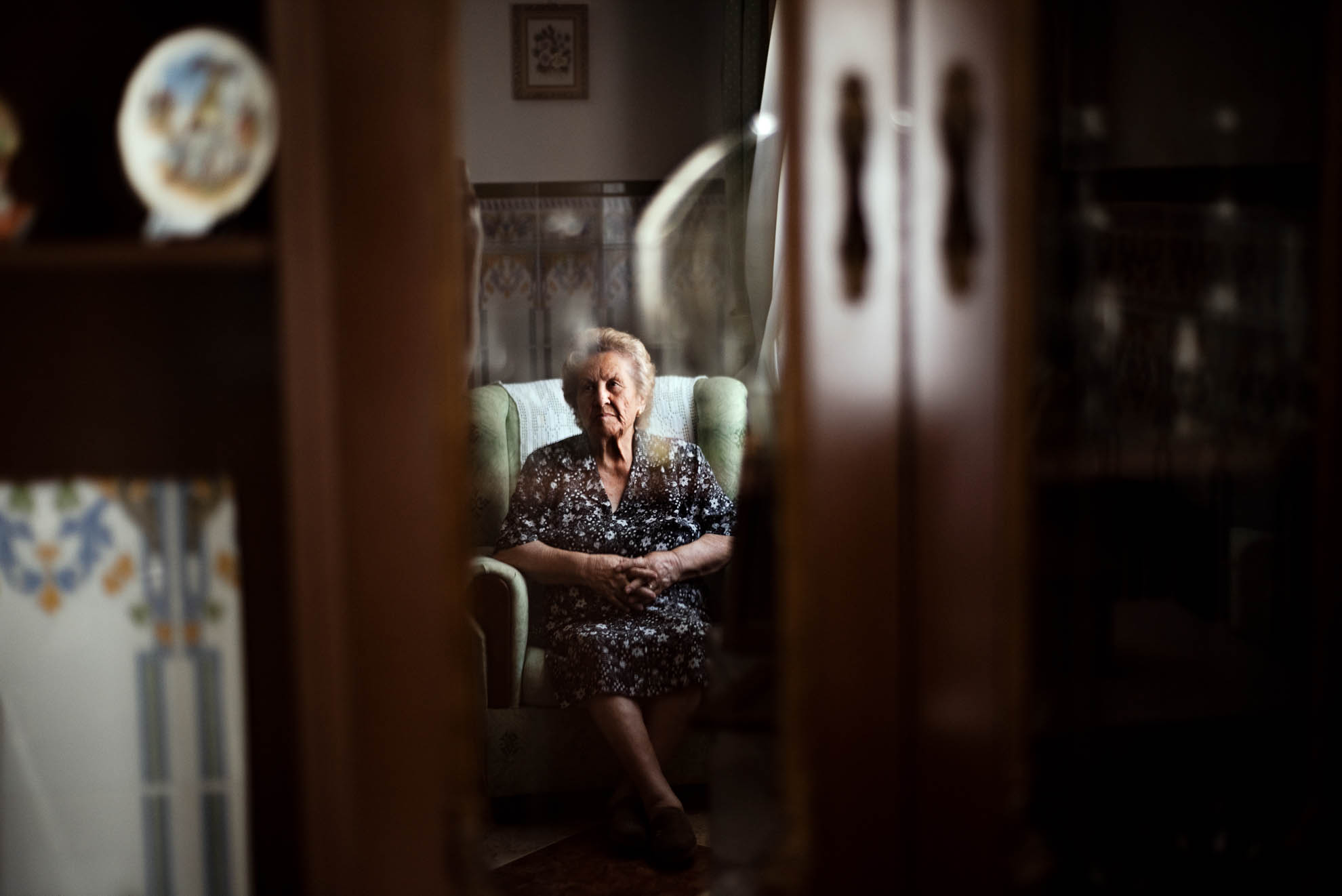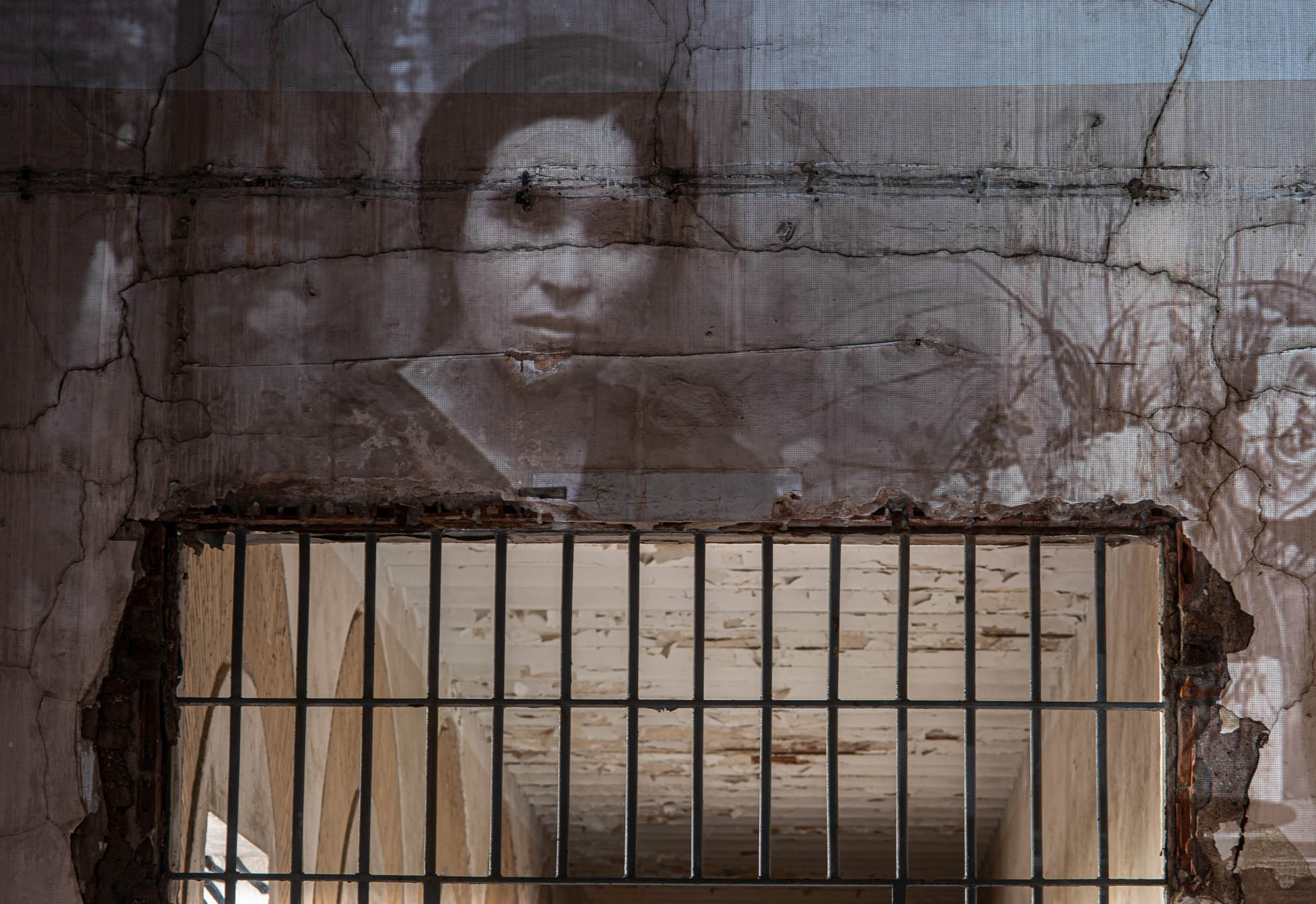Presentation
Memory is an exercise of reconstructing the past in the present moment, photography is a means to do so, to remember. Each portrait of a victim of reprisal is protected by the family as a treasure, every place that, owing to what took place there, has its own unique power, and every pained face of the son/daughter/sister/brother for having lost their loved one, come together to remember. This project was carried out throughout 2021 and the beginning of 2022, in the province of Huelva, and aims to bring visibility to the places and the victims, as well as to their close relatives who were victims of reprisal, sharing one unique visual space.
Most of Huelva offered little to no resistance to the revolt, and the villages where it was present, were quickly obliterated (August 1936). To date, there are 126 found or identified (mass) graves, which makes Huelva one of the Andalusian provinces with such sinister figures, second only to Seville. It also holds the second place in the number of victims (10,199), behind Granada. The cemetery of the mining village Nerva has the largest rural mass grave in Spain and it is estimated that therein lay the remains of up to 800 people.
The moment of Truth, Justice, and Reparation has come, the moment where oblivion has no place. This documentary project is part of the exhibition Donde no habite el olvido, organised by the Comisionado de la Memoria Democrática de la Diputación de Huelva (Council of Huelva Commission of the Democratic Memory).
Biography
Freelance photographer. Graduated in Information Sciences, with a major in Image and Sound from Complutense University (Madrid). Specialized in documentary photography, with a special interest in themes that address human rights, migration, and gender. In 2003, 2013, and 2022 she received the Andalucía Migraciones Award from the Junta de Andalucía.
He has exhibited both individually and collectively in France, Italy, Holland, Belgium, Morocco, Portugal, and Spain. Among his exhibitions in recent years, the following stand out: Donde no habite el olvido at the Centro de Arte Moderno y Contemporáneo 'Daniel Vázquez Díaz'; ¿Mi Abuelo El Espía? Tras las huellas de William Martin, a personal project; Galería De Espejos, a group exhibition at the Centro Andaluz de Fotografía, curated by Juan Manuel Bonet; Visibles. Mujeres para una década; Perspectivas, a group exhibition of Latitudes 21; and her participation in the group exhibition Elemental Arco 15.
Her work is included in Cuaderno 71 of the Kursala of the University of Cadiz, in Ideas y propuestas para el arte en España of the Ministry of Culture, in Arte desde Andalucía hacia
el siglo XXI of the Consejería de Cultura de Andalucía and the guide of current Andalusian photography Stand by of Fundación Madariaga.
She is part of the collective We Are Photo, with which she promotes and manages the cultural projects FEST COMARCAS PHOTO and WEAREPHOTOFEST. She is also a promoter and director of WOFESTHUELVA, an exhibition of films made by women.
